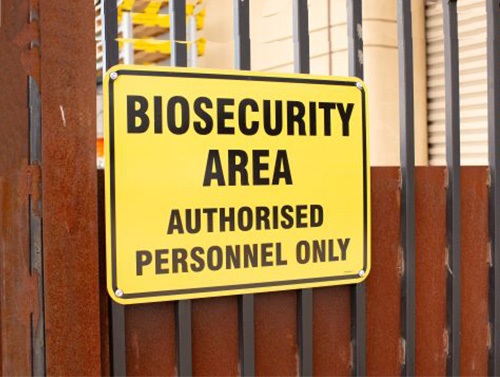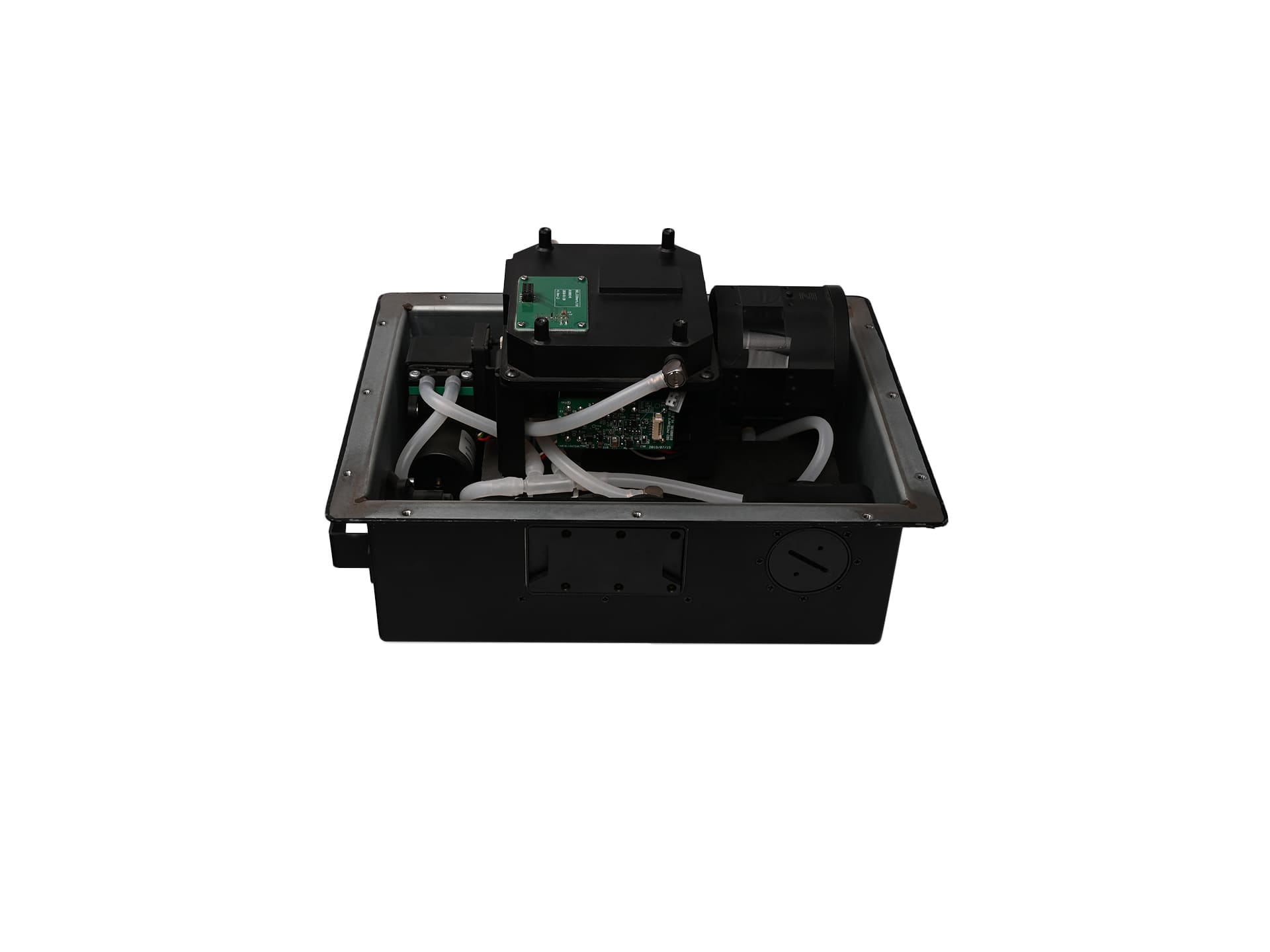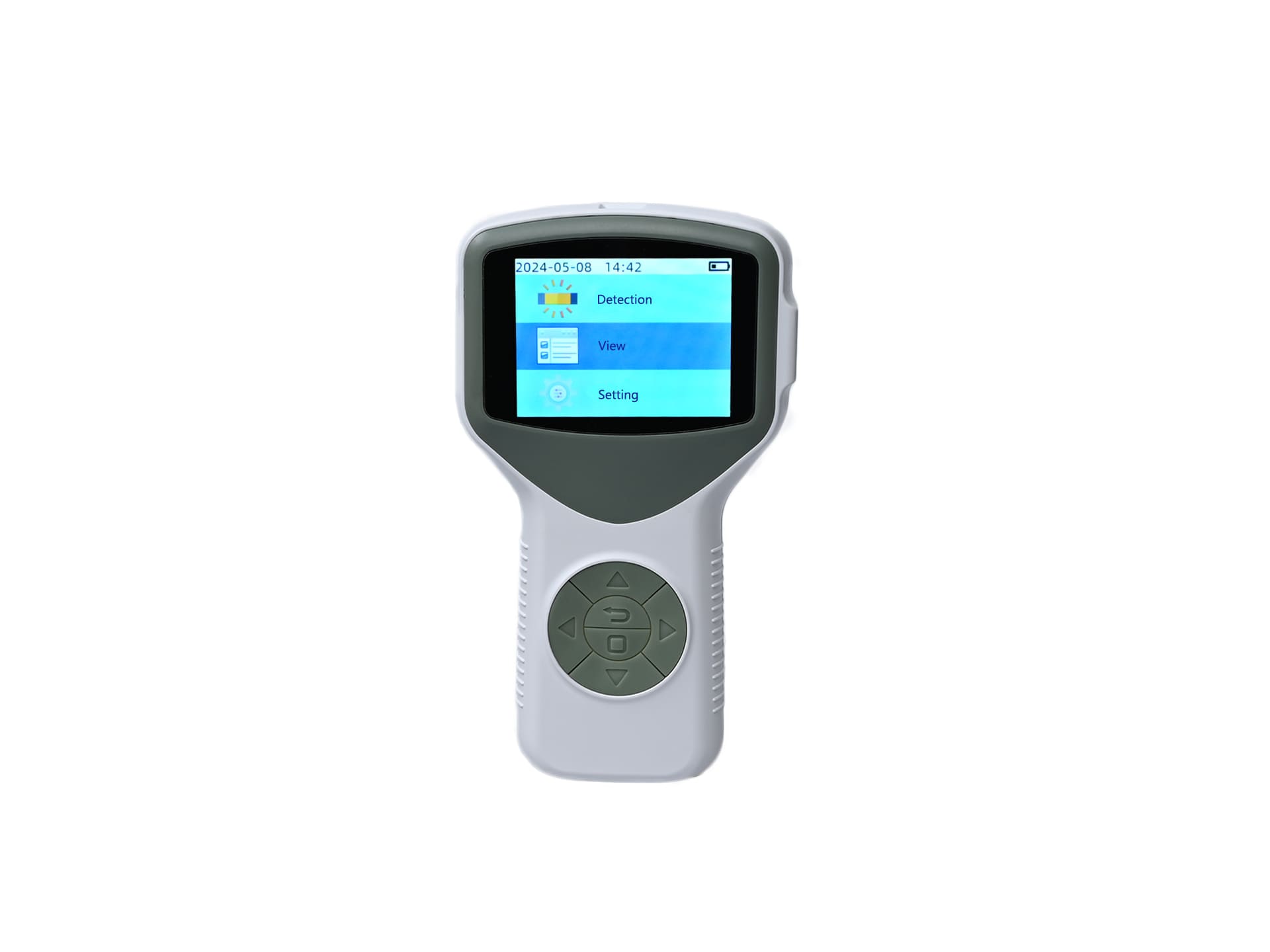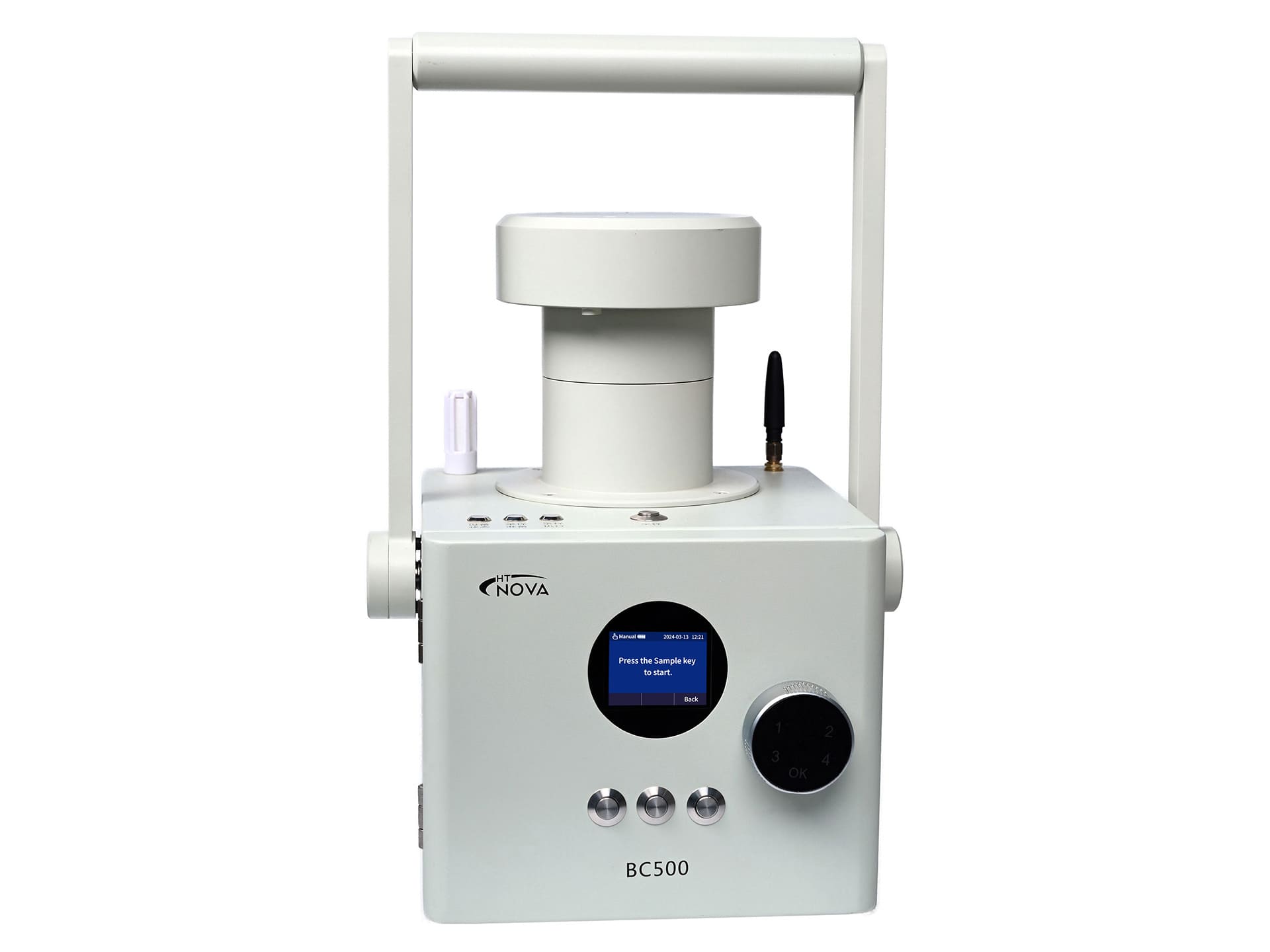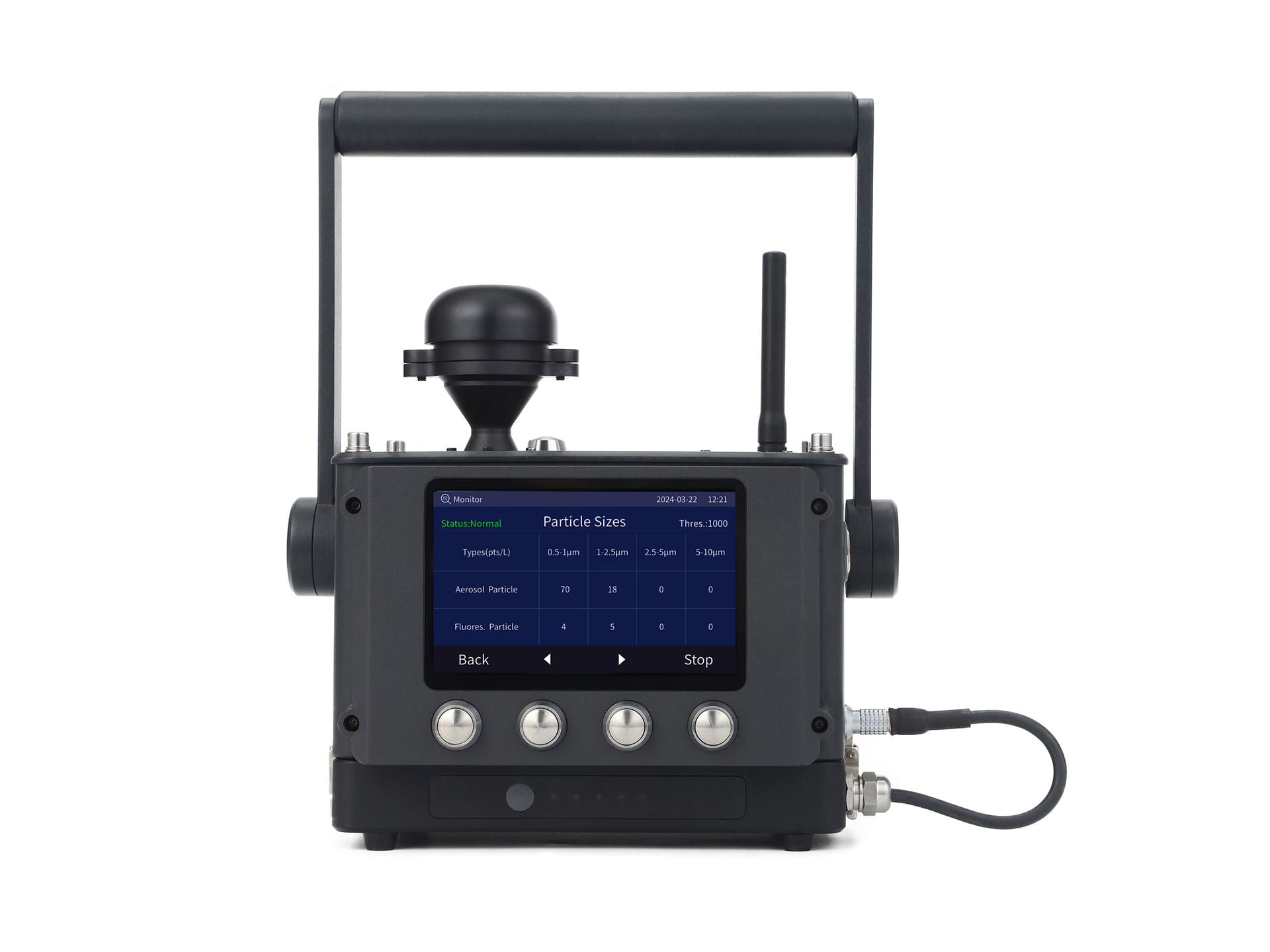
Bioaerosol
Bioaerosol detection technology involves the identification and analysis of biological particles in the air, such as bacteria, viruses, and fungi. Bioaerosol detection employs various methods, including optical, biological, and molecular techniques. Optical methods use light scattering or fluorescence to detect and characterize particles in the air. Biological methods involve the use of live organisms, such as bacteria or cells, to react with bioaerosols and produce measurable responses. Molecular techniques, such as polymerase chain reaction (PCR) or DNA sequencing, can identify the unique genetic material of specific biological agents.
These technologies are crucial in various applications, including environmental monitoring, public health, and biodefense. In infectious disease outbreaks or bioterrorism threat events, bioaerosol detection is essential for early detection systems. Advances in this technology help develop rapid and accurate detection systems to safeguard public health and safety.
Technology Features
Effectively detect bioaerosols in the environment
Microbial detection: Bioaerosol technology can sensitively detect the presence and concentration of microorganisms (such as bacteria, fungi, viruses, etc.) in the air, even achieving reliable detection at extremely low concentrations
Specificity: Bioaerosol technology can achieve the detection of specific microorganisms through molecular biology or biochemical methods. It has high specificity, accurately identifying target microorganisms and excluding interference from other environmental particles
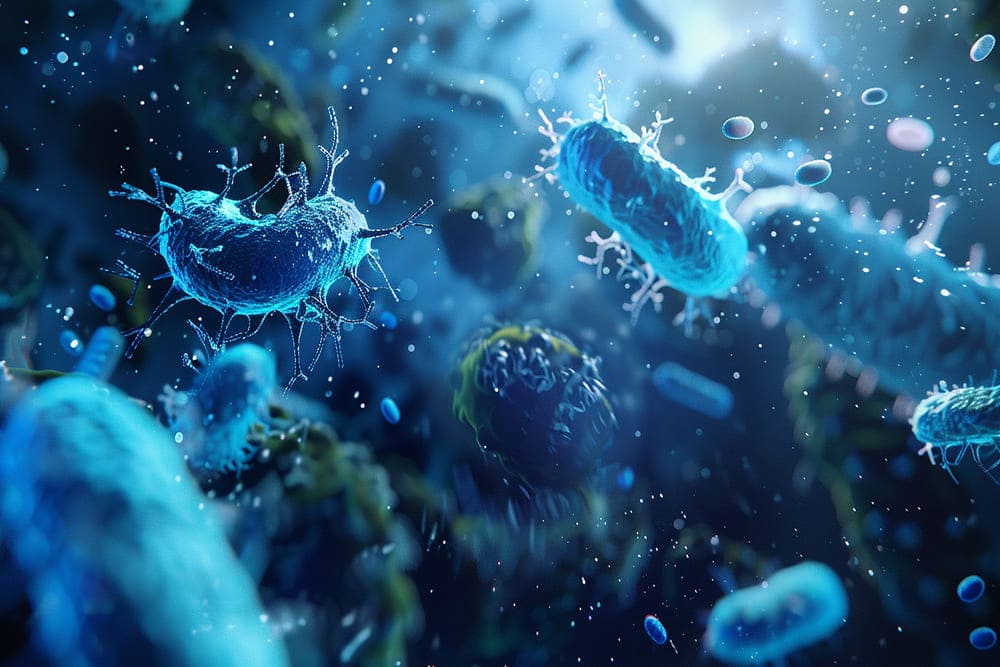
Real-time acquisition of on-site data
Real-time: Biological aerosol technology enables real-time monitoring of biological particles, rapidly obtaining relevant information about microorganisms in samples, aiding in the timely detection and response to airborne diseases and epidemics
Rapidity: Biological aerosol technology features rapid analysis, allowing for the collection, processing, and detection of samples in a short period, enhancing monitoring efficiency and emergency response capabilities

Diverse application scenarios
The technology of biological aerosol is widely applied in various fields:
Biological Safety Monitoring: It is extensively used in biological safety to monitor and identify pathogenic microorganisms in the air, such as influenza viruses and bacterial spores, aiding in the prevention and control of the spread of infectious diseases
Environmental Ecology Research: Biological aerosol technology is also applied in environmental ecology research to study the structure and evolution of microbial communities in the air, revealing the ecological functions and roles of microorganisms in the atmosphere
Biological Weapon Defense: In the defense against biological weapons and terrorist attack warnings, biological aerosol technology plays a crucial role in monitoring airborne biological threat agents, enabling the timely detection and response to potential acts of bioterrorism










